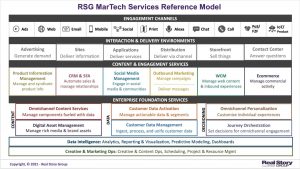
Have you ever wondered how to get more engagement with your social media posts? What about whether there is a special hour or day when your friends are more likely to be online? Well, I’ve asked myself the same questions, and I’ve finally found the answer. More precisely, I’ve built a solution to answer these questions.
My name is Baraa Hamodi. I’m a Software Engineering Intern here at Optimizely. We talk about optimization all day long. As a company, we’ve helped thousands of companies optimize billions of user experiences on all platforms from web to mobile, but one area where we haven’t focused our optimization efforts is social media.
Social media is one of the most important channels of communication in today’s society and it’s often very hard to do it right. In light of this, I’ve decided to spend some time outside of work answering this question: what is the best time of day to post on Facebook to reach the largest audience?
With this in mind, I wrote a script and embarked on an experiment. My script extracts the number of Facebook friends I have online every 15 minutes of every hour of every day and also populates a spreadsheet.
The goal of my experiment was to figure out if there is a pattern to the time of day and the day of week when most of my Facebook friends are online so I could learn the best time to publish a post. Now, just because a lot of my friends are online it doesn’t necessarily mean that I’ll get higher engagement on my posts. But one fact that is true is that when more people are online, every post I publish has more potential viewers. This gives us a preliminary idea of the optimal time to post.
I ran this experiment for two weeks from June 8 – June 22. My hypothesis was that Saturday evenings would have the greatest amount of traffic and as such be the best time to post on Facebook, but the data proved otherwise.
The Caveats
Before we get to the results, I want to share a few facts about the experiment, caveats, and things to keep in mind while reading.
All of the collected data was specific to me, my timezone and my set of friends. The data for your set of friends and your geographical region might be very different. That’s why I’ve open sourced the script I used to gather this data. Feel free to clone the script on GitHub. You can use it as a tool to understand your own set of friends. The results may surprise you.
Knowing that Facebook friend activity can change from week to week, I ran this experiment for two weeks to catch any week-to-week variation. To get statistically significant results, you would have to run this experiment for at least a few months to catch any seasonal changes. Nonetheless, two weeks it is still a valuable diagnostic.
The Results
First, I’ve plotted a graph that displays the number of online friends of each week separately (Monday to Sunday) designed to highlight any discrepancies between the two weeks.
The good news is that the collected data remained consistent during the experiment from week 1 to week 2. The next two graphs break down the two weeks into individual days.
Results for Week 1
Results for Week 2
After two weeks of data mining, I observed some clear trends. Here are some key takeaways from my analysis:
- Out of my 1185 Facebook friends, the greatest number of online friends recorded during the experiment was 153 and that happened on a Monday at 8:00 PM PST. The lowest number was 10 and that happened on a Sunday at 4:00 AM PST.
- Mondays through Thursdays performed the best and were very similar, both in terms of average number of online friends and highest peak hours. I compared the average number of online friends on different days of the week by modeling each 2-hour interval as an independent Poisson distribution. The daily averages were found to be statistically indistinguishable at 95% confidence for Mondays through Thursdays. The average number of online friends for these days was approximately 80 and the maximum number peaked at around 150.
- In terms of daily averages, Sundays were worse compared to Mondays through Thursdays (this was statistically significant at 95% confidence). The performance of a certain day was calculated based on 3 factors; overall average of online friends, highest peak, and lowest low. So based on these performance metrics, Sundays performed 6% worse than Mondays through Thursdays.
- On average, Fridays performed even worse than Sundays (again significant at 95% confidence). On my performance metric, Fridays scored 9% lower than Sundays.
- Saturdays performed the absolute worst. They performed 7% worse than Fridays on the performance score. The daily average was found conclusively to be lower even than Friday’s (again at 95% confidence).
- Looking at the graphs, it was observed that the common trend for Mondays through Thursdays and even Sundays was that the online population peaks in the evening between 6:00 and 8:00 PM PST. This was not evident for Fridays and Saturdays which seemed to stay flat during the evening hours.
The Conclusions
So to maximize your post outreach (and hopefully engagement), I recommend posting just before the wave of increased traffic begins. A great posting time would be around 5:00 PM PST on Mondays through Thursdays. This allows your content to be fresh and ready for your friends to see in their newsfeed when they check their Facebook in the evening.
I hope you try out my open source script and share your findings! Find out what the rest of the nerds at Optimizely are up to on our engineering blog.
(251)









